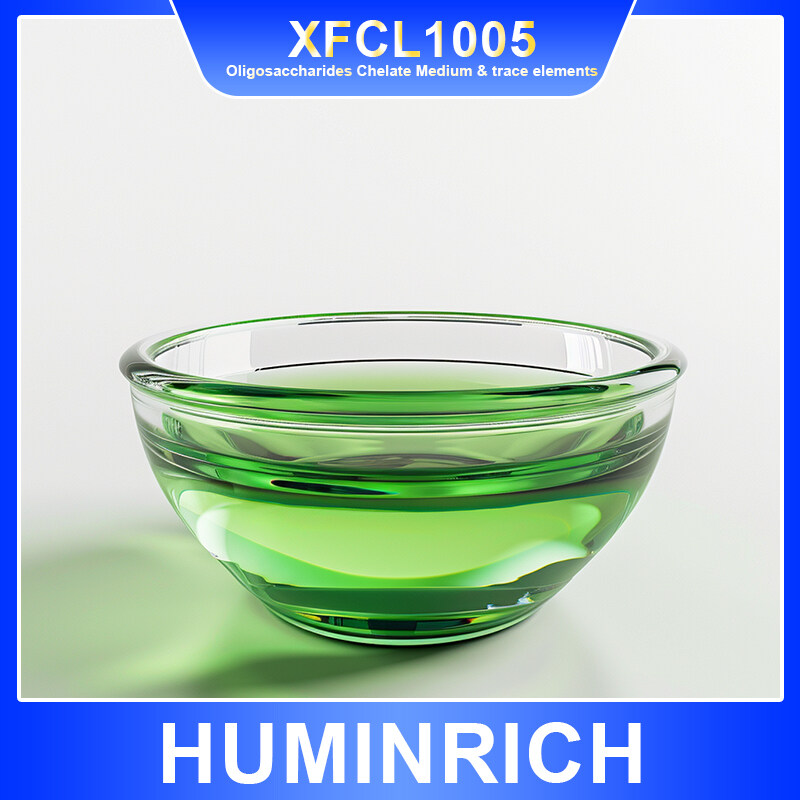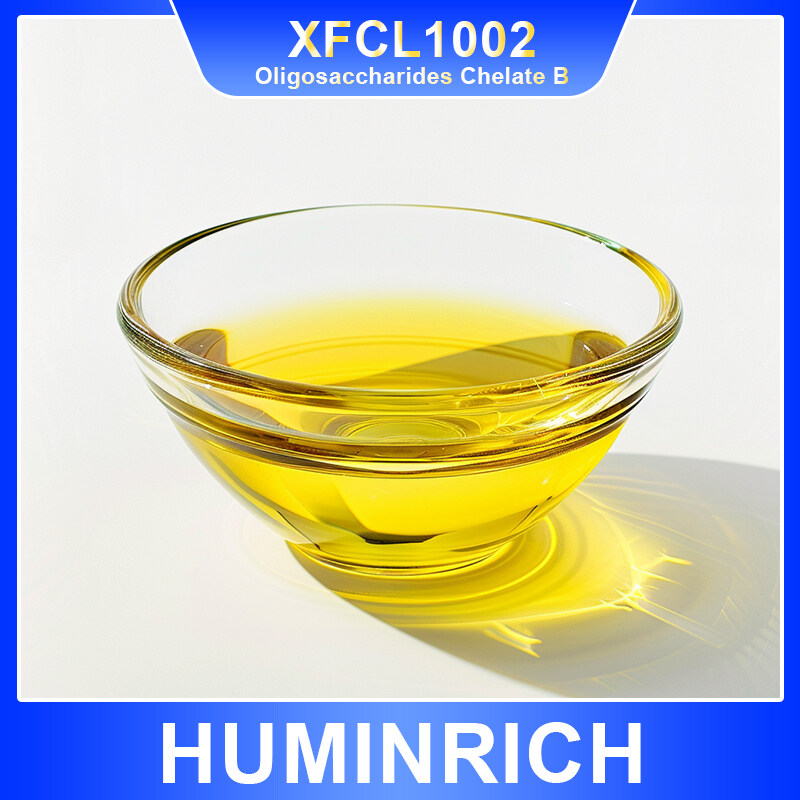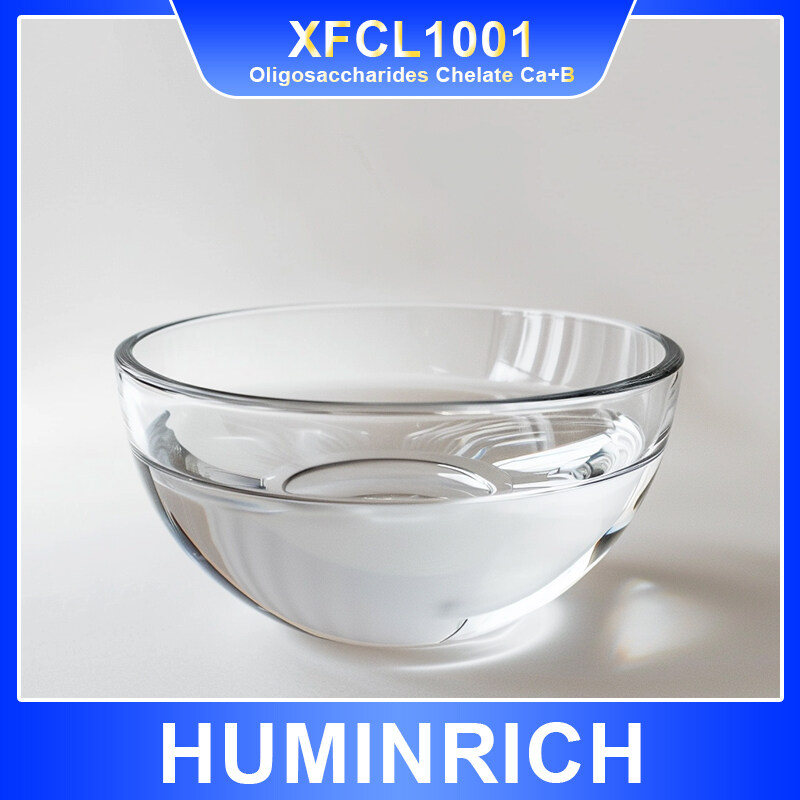Email format error
Email cannot be empty
Email already exists
6-20 characters(letters plus numbers only)
The password is inconsistent
Email format error
Email cannot be empty
Email does not exist
6-20 characters(letters plus numbers only)
The password is inconsistent

Oligosaccharides Chelate Medium & trace elements
This product is a clear and transparent liquid made from oligosaccharides and elements such as Erythritol, Mannitol, Xylitol and Lactitol through a high-temperature chelation process. The product is in a green and clear liquid state, with no impurities, no precipitation, no precipitates, no crystals, high density, and a stable pH value between 1.0-2.0.
|
Model No. |
Product Name |
Sugar Alcohol |
Content |
Appearance |
Density |
PH |
|
XFCL1001 |
Oligosaccharides Chelate Ca+B |
Erythritol:30-40g/L Mannitol:30-40g/L; Xylitol: 30-40g/L Lactitol:30-40g/L; |
Ca: 120-130g/LB : 8-10g/L; |
Transparent Clear liquid |
1.40-1.45 |
3.0-4.0 |
|
XFCL1002 |
Oligosaccharides Chelate B |
B : 150-160g/L; |
Golden Clear liquid |
1.3-1.35 |
8.0-9.0 |
|
|
XFCL1003 |
Oligosaccharides Chelate B+Zn |
B : 120-130g/L; Zn:8-10g/L; |
Golden Clear liquid |
1.3-1.35 |
8.0-9.0 |
|
|
XFCL1004 |
Oligosaccharides Chelate B+Mo |
B : 120-130g/L; Mo:5-10g/L; |
Golden Clear liquid |
1.3-1.35 |
8.0-9.0 |
|
|
XFCL1005 |
Oligosaccharides Chelate Medium & trace elements |
Erythritol:30-50g/L Mannitol:30-35g/L; Xylitol: 50-60g/L Lactitol:60-70g/L; |
N:70-75g/L S: 5-10g/L Ca:90-95g/L Mg:10-15g/L Zn:30-35g/L B:0.5-1g/L Fe: 0.5-1g/L Cu:3-5g/L Mn:0.5-1g/L Mo:0.5-1g/LCl: 0.5-1g/L La:0.5-1g/L Ce:0.5-1g/L Ti: 0.1-0.3g/L |
Green Clear liquid |
1.40-1.45
|
1.0-2.0 |
|
XFCL1006 |
Oligosaccharides Chelate Major& medium elements |
N:30-35g/L P2O5:490-500g/L K2O:40-45g/LS: 5-10g/L Ca:10-15g/L Mg:10-15g/L Zn:90-100g/L B:5-10g/L Fe: 2-5g/L Cu:8-10g/L Mn:0.5-1g/L Mo:0.5-1g/L Ce:0.5-1g/L Ti: 0.1-0.3g/L |
Blue Clear liquid |
1.55-1.60 |
1.0-2.0 |
Oligosaccharides Chelate Medium & trace elements
|
Appearance |
Green Clear liquid |
|
Chitosan Oligosaccharide |
20-30g/L |
|
Seaweed Oligosaccharides |
20-30g/L |
|
Amino Acid |
20-30g/L |
|
Carbon |
40-45g/L |
|
N |
70-75g/L |
|
S |
5-10g/L |
|
Ca |
90-95g/L |
|
Mg |
10-15g/L |
|
Zn |
30-35g/L |
|
B |
0.5-1g/L |
|
Fe |
0.5-1g/L |
|
Cu |
3-5g/L |
|
Mn |
0.5-1g/L |
|
Mo |
0.5-1g/L |
|
Cl |
0.5-1g/L |
|
La |
0.5-1g/L |
|
Ce |
0.5-1g/L |
|
Ti |
0.5-1g/L |
|
Erythritol |
30-50g/L |
|
Mannitol |
30-35g/L |
|
Xylitol |
50-60g/L |
|
Lactitol |
60-70g/L |
|
Density |
1.40-1.45 |
|
PH |
1.0-2.0 |
2. Product characteristics:
2.1 High stability: Through high-temperature chelation technology, a stable liquid is formed to ensure that the elements are evenly distributed in the liquid and are not easy to precipitate or precipitate.
2.2 Good solubility: As a carrier, sugar alcohols have excellent solubility and permeability, and are easy to be absorbed by plants or microorganisms.
2.3 Green and environmentally friendly: The raw material sugar alcohol is a natural product, does not contain any toxic and harmful substances, and is environmentally friendly.
2.4 Multi-element compounding: Chelate multiple elements at the same time to meet the needs of plants or microorganisms for multiple nutritional elements.
2.5 High density: The liquid has a high density, which means it contains more nutrients per unit volume.
3. Production process:
3.1 Raw material preparation: Choose high-quality sugar alcohols (such as erythritol, mannitol, etc.) and inorganic salts (containing boron and other elements).
3.2 Dissolve and mix: Dissolve sugar alcohols and inorganic salts in water respectively, and then mix evenly in proportion.
3.3 High-temperature chelation: The mixed solution is heated to a certain temperature, and sugar alcohols and inorganic salts are formed into stable complexes through high-temperature chelation technology.
3.4 Filtration and purification: Filter the chelated liquid to remove impurities and unreacted raw materials.
3.5 Adjust pH value: Adjust the pH value of the liquid as needed to ensure it is within the appropriate range.
3.6 Filling and packaging: Fill the clear liquid into designated containers for packaging and labeling.
4. Process characteristics
4.1 High-temperature chelation technology: ensure the stability of the combination between elements and sugar alcohols and prevent precipitation or precipitation.
4.2 Strict quality control: Strict quality testing is conducted on raw materials, intermediate products and final products to ensure that products meet standards.
4.3 Environmental protection and energy saving: Use advanced production processes and equipment to reduce energy consumption and waste emissions.
5. Product Application:
5.1 Chemical industry:
As a metal surface treatment agent, it is used to improve the corrosion resistance and wear resistance of metal surfaces.
As a catalyst carrier, it improves the activity and stability of the catalyst.
In synthetic chemistry as a reaction medium or solvent.
5.2 Agriculture:
Used as a foliar fertilizer, it provides a variety of nutrients to plants through foliar spraying to promote plant growth and increase yields.
Used for soil improvement to improve soil fertility and water retention.
As an auxiliary for biological pesticides, it can improve the adhesion and permeability of pesticides and enhance their efficacy.
These elements all play an important role in plant growth and development. Here are their main roles in plants:
Sulfur (S): Sulfur is an essential element for plant growth. It is a component of amino acids in protein and has an important impact on various metabolic processes in plants. Sulfur is also involved in plant photosynthesis, respiration and the synthesis of oils, vitamins and certain secondary metabolites.
Calcium (Ca): Calcium is an important component of plant cell walls. It has a stabilizing effect on cell walls and can enhance the strength of cell walls. In addition, calcium is also involved in various physiological processes in plants, such as signal transduction, ion balance, enzyme activity regulation, etc.
Magnesium (Mg): Magnesium is one of the components of chlorophyll and is essential for photosynthesis in plants. Sufficient magnesium supply can promote the synthesis of chlorophyll, enhance the photosynthetic ability of plants, and increase the growth rate and yield of plants. In addition, magnesium is also involved in processes such as plant respiration, protein synthesis, and enzyme activity regulation.
Zinc (Zn): Zinc is a component of many important enzymes and can catalyze many biochemical reactions in plants. For example, zinc participates in the DNA synthesis and protein synthesis processes in plants, promoting the division and growth of plant cells. In addition, zinc is also involved in the synthesis and transmission of plant hormones in plants, regulating plant flowering, fruit development and other processes.
Boron (B): Boron has an important impact on plant growth and development, especially playing a key role in the formation and development of plant reproductive organs. Boron is also involved in processes such as sugar metabolism, protein metabolism and cell wall formation in plants.
Iron (Fe): Iron is closely related to photosynthesis. It affects the redox system in photosynthesis, participates in photophosphorylation, and directly participates in the reduction process of carbon dioxide. In addition, iron is also involved in processes such as respiration, redox, and electron transfer in plant cells.
Copper (Cu): Copper is a component of various oxidases in plants and plays an important role in redox reactions. It participates in plant respiration and affects the utilization of iron by crops. In addition, copper also has functions such as enhancing photosynthesis, facilitating growth and development, enhancing disease resistance, and improving drought and cold resistance.
Manganese (Mn): Manganese is an activator of various enzymes in plants and is very important for plant metabolism. It is involved in processes such as photosynthesis, respiration, and nitrogen metabolism.
Molybdenum (Mo): Molybdenum is a component of molybdenum protein and ferritin in nitrogenase, and plays an important role in biological nitrogen fixation in plants. In addition, molybdenum is also involved in various other metabolic processes in plants.
Chlorine (Cl): Chlorine is one of the essential trace elements for plants. It participates in processes such as photosynthesis, water balance and ion balance of plants. An appropriate supply of chlorine can improve plant stress tolerance and yield.
Lanthanum (La):
Lanthanum can enhance the stress resistance of plants and has a strong detoxifying effect on heavy metals and salt damage in the soil. This helps plants survive and grow in harsh environments.
Lanthanum can also regulate physiological metabolic processes in plants, promote photosynthesis and respiration of plants, thereby improving plant yield and quality.
In plant care, plants can be supplemented with an appropriate amount of lanthanum through foliar spraying to promote plant growth and development. In addition, lanthanum can also improve plants' adaptability to the environment, such as reducing toxic concentrations in soil and enhancing plants' resistance to salt damage and heavy metal pollution.
Lanthanum can also improve the nutritional value and quality of plants. Therefore, during the growth of certain fruit trees and vegetables, lanthanum can be applied in appropriate amounts to increase yield and quality.
Cerium (Ce):
Cerium chloride can significantly improve the absorption and effective distribution of light energy in plants, promote aerobic release of chloroplasts, and thereby promote photosynthesis.
Cerium can slow down the harmful effects of heavy metals (such as lead) on plant photosynthesis and growth and development by maintaining the stability of chloroplast membranes.
Cerium can also promote calcium absorption during plant nitrogen metabolism, increase electron transfer and aerobic respiration rate, promote periodic and non-periodic cycling of photophosphorylation, and increase Mg
2+ and Ca 2+ ATPase activity. Cerium may be able to replace magnesium to a certain extent and has the function of promoting chlorophyll synthesis.
Titanium (Ti):
Titanium is a beneficial trace element that can enhance photosynthesis of plants, increase chlorophyll content and nitrogenase, and promote the accumulation of dry matter.
Titanium has a hormone-like effect, which is beneficial to the activation of DNA in the nucleus, and can mobilize endogenous hormones to be transported to the growth center, promote differentiation and induce callus.
Titanium can also promote the absorption and movement of nitrogen, phosphorus, potassium and other trace elements by plants, improve nitrogen fixation ability, improve quality and increase yield.
Titanium can effectively increase the activity of enzymes in crops, regulate metabolism, promote growth and development, and increase yields.
6. Packaging, transaction method, delivery method, etc.:
Packaging: 1kg/25kg bag/drum with linner inside.
Payment method: Western Union; T/T; MoneyGram
7. After-sales service/customized service/sample service:
Packaging customization: Customized services are provided for packages above 1000KG;
Sample service: samples are available;





